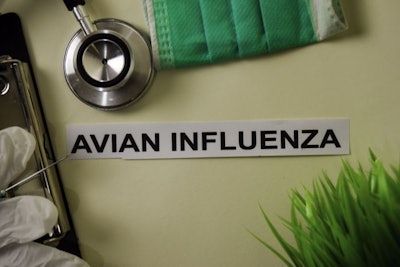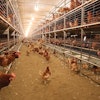
For the first time since May 2015, the H5N1 HPAI virus has been detected in the Republic of Türkiye (Turkey).
Affected was a flock of more than 470,000 poultry at the end of January, according to the official notification to the World Organisation for Animal Health (WOAH).
Source of the infection is reported to be contact with wild birds. The infected premises is located in the western province of Afyonkarahisas (Afyon), where 29 birds died. The rest of the flock has been destroyed.
Domestic birds test positive for HPAI in Nepal, Russia’s Far East
At the end of last month, commercial laying hens tested positive for the H5N1 HPAI virus after more than 2,900 of them died.
Based on the WOAH report, the source of infection was fomites or contact with wild species — such as eagles and crows — which had been seen at the premises. Following confirmation of the virus, the remaining 4,600 poultry at the farm were culled.
The affected premises is located in Bagmati zone, near to the capital, Kathmandu, in the Central Development Region.
Nepal’s last HPAI outbreak linked to the same virus serotype ended in November of 2022. Between January and June, 34 outbreaks were registered with WOAH. Directly impacted were almost 275,000 poultry.
In Russia’s Far Eastern federal district, HPAI virus of the H5N1 serotype was detected for the first time in the Kamchatka region.
Testing followed the death of one domestic bird of unspecified type in mid-January, according to the notification to WOAH. With around 100 birds, the affected premises appears to be on a remote island in the Bering Sea. The rest of the flock is reported to have been culled.
More Japanese regions cleared to export poultry
Over the past two weeks, exports have been restored to Hong Kong from 11 more Japanese prefectures, according to Japan’s agriculture ministry.
However, further outbreaks of HPAI have been confirmed in Japan over this period.
Latest WOAH notification covered four new outbreaks starting January 18-21. Directly involving 716,450 birds, all affected egg farms are in four different prefectures in three regions on Honshu, the nation’s largest island.
These brought to 63 the number of H5N1 HPAI outbreaks in Japan since October 2022. Directly impacted through mortality or culling have been more than 11.66 million of the country’s poultry.
Since the latest WOAH notification, a further 11 HPAI outbreaks have been confirmed by the agriculture ministry.
Between January 22 and February 6, the outbreaks affected premises in seven prefectures in four regions. One of these is on the southern island of Kyushu, while the others are all on Honshu, including eight premises in the Kanto region around Tokyo.
In these latest outbreaks, the estimated total number of poultry impacted is around 1.97 million. Each comprising between 53,000 and 1.11 million birds, eight of the outbreaks were in commercial laying hens. A further two were in ducks (3,000 and 12,000 birds), one each in quails (135,000), broiler breeders (24,000), guinea fowl (4,800) and a small group of ostriches and emus.
Among Japanese wild birds, a further 171 cases have tested positive for the H5N1 virus, bringing the total reported to WOAH to almost 1,200. Latest cases mainly impacted were two species of cranes in the city of Izumi.
Last month, Japan’s veterinary authority notified WOAH about the detection of a second HPAI virus serotype in poultry. Broilers at a farm on the southern island of Kyushu tested positive for the H5N2 virus variant. So far, these are the nation's only reported cases.
HPAI developments elsewhere in Asia
To WOAH, Israel’s animal health agency has recently declared the HPAI situation “resolved” in poultry and other birds.
Between November 2022 and mid-January 2023, 11 outbreaks linked to the H5N1 virus serotype were confirmed on Israeli poultry farms. Across four regions, these involved more than 344,000 birds.
Over approximately the same time period, three wild birds in the country tested positive for this virus variant.
Also officially declaring the disease situation “resolved” is Kazakhstan. Found dead at a lake, two wild geese carcasses tested positive for the H5N1 virus serotype in December 2022.
Last week, authorities in one province in the Philippines reinstated restrictions on the importation of live poultry and poultry products.
In order to maintain the avian flu-free status of Pangasinan, the provincial government has banned imports of these birds and products from 17 other provinces, according to Philippines News Agency. Exceptions to this incoming trade ban include chicken products with appropriate veterinary certificates.
Part of the Ilocos Region, Pangasinan is in the northwest of the island of Luzon.
View our continuing coverage of the global avian influenza situation.

















